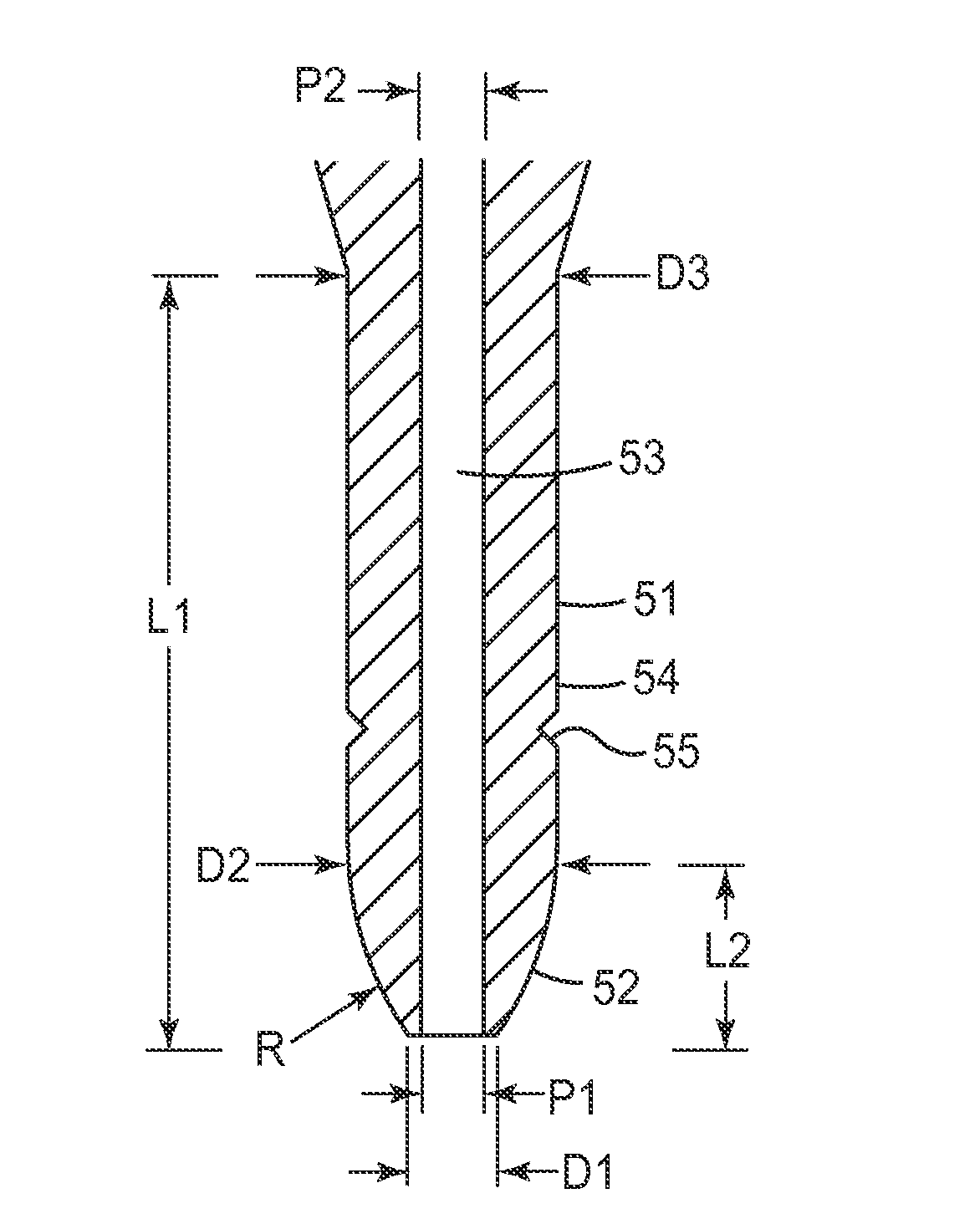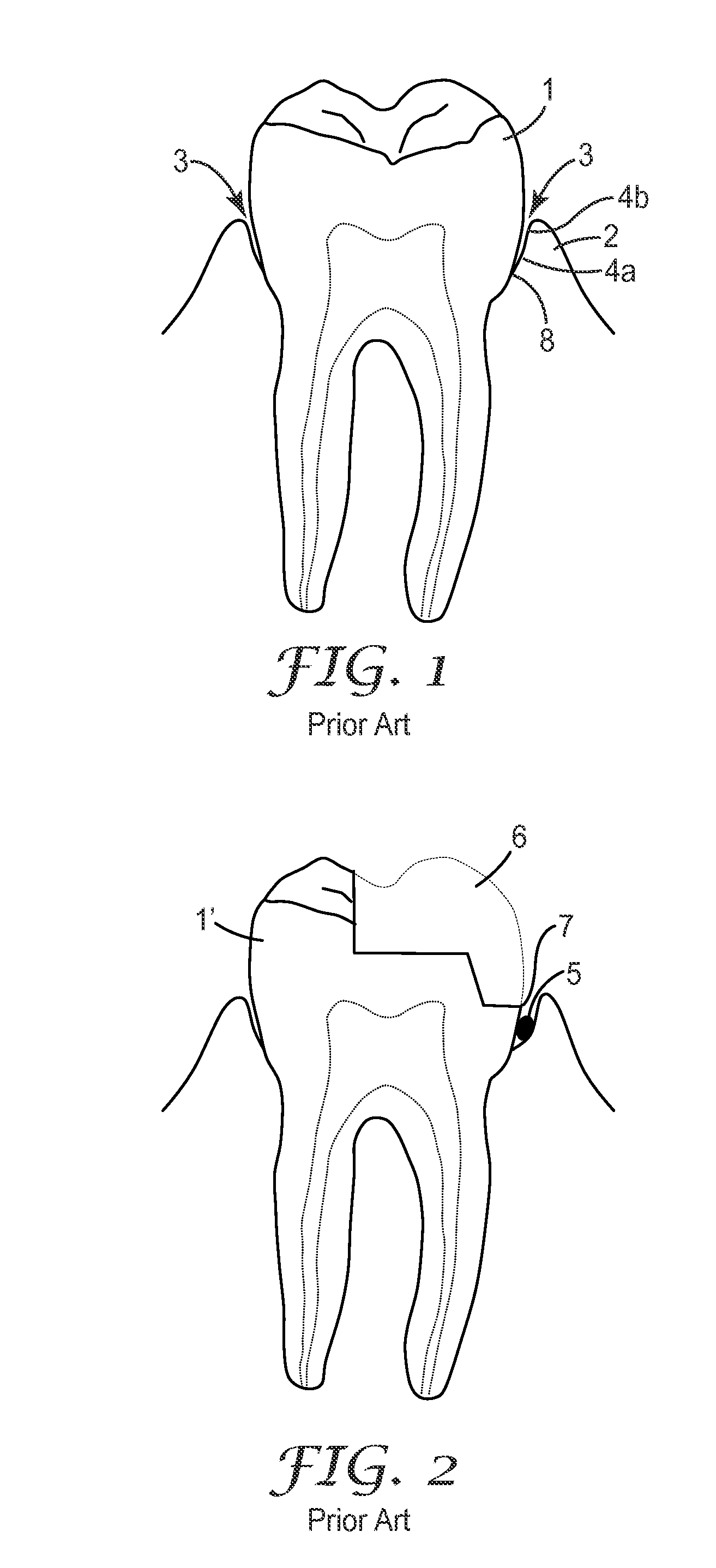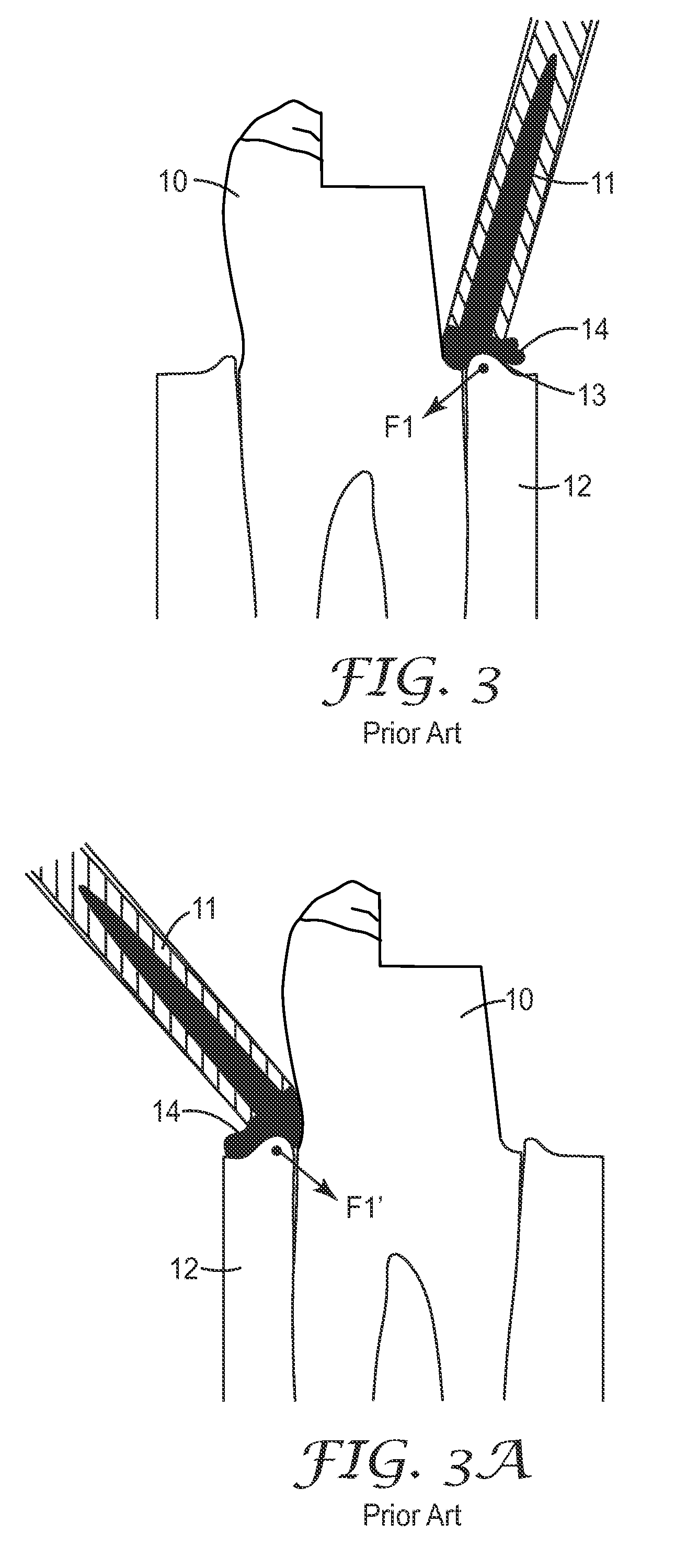Device and a method for delivery of a dental composition
a dental composition and device technology, applied in the field of dental composition devices and delivery methods, can solve the problems of limited or low risk of damage to the epithelial attachment between, inconvenience for the dentist, and discomfort for the patient, and achieve the effect of avoiding significant damage to the epithelial attachment, reducing waste and cost, and recognizing reliably
- Summary
- Abstract
- Description
- Claims
- Application Information
AI Technical Summary
Benefits of technology
Problems solved by technology
Method used
Image
Examples
example 1.1
[0138]The test device was adjusted with the test surfaces of the jaws 101, 102 spaced from each other at about 0.2 mm. The crevice of 0.2 mm between the jaws 101, 102 was selected in accordance to the biological width of a natural gingival sulcus crevice as mentioned in the references “Laufer, Ben-Zion, DMD, MSD; Baharav, Haim, DMD, MSc; Cardash, Harold S, BDS, LDS, RCS (Eng): The Linear Accuracy of Impressions and Stone Dies as Affected by the Thickness of the Impression Margin”, and “Laufer, Ben-Zion, DMD, MSD; Baharav, Haim, DMD, MSc; Ganor, Yehuda, DMD; Cardash, Harold S., BDS: The effect of marginal thickness on the distortion of different impression materials”.
[0139]A device having a cannula according to the invention was filled with a dental composition as available under the designation Expasyl™, form the company Produits Dentaires Pierre Rolland, France, further referred to as “Expasyl”. The device generally corresponded to a device as shown in FIG. 6. The cannula has the d...
examples 1.2 and 1.3
[0142]Example 1.1 was repeated using the same device and cannula, but in Example 1.2 with the jaws 101, 102 spaced at a distance of about 0.3 mm, and in Example 1.3 spaced at a distance of about 0.4 mm.
example 2.1 , 2.2 , 2.3
Example 2.1, 2.2, 2.3
[0143]Examples 2.1, 2.2 and 2.3 correspond to the Examples 1.1, 1.2 and 1.3, but a different cannula according to the invention was used. The dimensions of the cannula used in Examples 2.1, 2.2 and 2.3 are given in Table 2.
[0144]
TABLE 2D2D3P1 = D1P2L1L2RCannula of Examples1.11.70.41.0100.450.652.1, 2.2, 2.3(all dimensions in mm; D1, D2, D3, P1, P2, L1, L2 and R as indicated in FIG. 5)
Comparative Examples 3.1, 3.2, 3.3
[0145]Examples 1.1, 1.2, and 1.3 have been repeated with a known device and a known cannula. The cannula used in Comparative Examples 3.1, 3.2 and 3.3 had dimensions as specified in Table 3. The Expasyl in Comparative Examples 3.1, 3.2 and 3.3 was extruded by moving the piston of a known device at a speed of about 2 mm per second. The piston used for extruding the Expasyl in Comparative Examples 3.1, 3.2 and 3.3 had a diameter of about 4.5 mm, so that the extrusion rate was about 31.8 mm3 per second.
[0146]
TABLE 3D1 = D2 = D3P1 = P2L1L2RCannula of Co...
PUM
 Login to View More
Login to View More Abstract
Description
Claims
Application Information
 Login to View More
Login to View More - R&D
- Intellectual Property
- Life Sciences
- Materials
- Tech Scout
- Unparalleled Data Quality
- Higher Quality Content
- 60% Fewer Hallucinations
Browse by: Latest US Patents, China's latest patents, Technical Efficacy Thesaurus, Application Domain, Technology Topic, Popular Technical Reports.
© 2025 PatSnap. All rights reserved.Legal|Privacy policy|Modern Slavery Act Transparency Statement|Sitemap|About US| Contact US: help@patsnap.com



